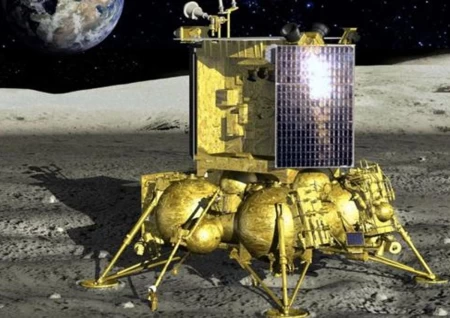Russian Luna-25 makes stunning discovery on Moon

The Particle Monitoring Levitator (PML) on Luna-25, which detected the impact event, provided the most important new information.
One of the most remarkable pictures showed a lunar crater.
Before it ever touches down on the Moon's surface, Russia's Luna-25 spacecraft has made a number of amazing findings that have cast fresh light on the Moon's composition, surface features, and exosphere dynamics.
The most important finding came from the onboard ADRON-LR neutron and gamma spectrometer, which detected strong lines of chemical elements in the energy spectrum of the lunar soil.
Another first in lunar exploration occurred when the ARIES-L ion energy-mass analyzer was turned on while in lunar orbit and was directed especially at the subpolar region of the Moon. This made it possible for researchers to determine the ideal operational settings for determining particle energy spectra after landing.
A micrometeorite impact event was discovered by Luna-25's Particle Monitoring Levitator (PML), most likely coming from the Perseid meteor shower.
This surprising finding highlights the spacecraft's capacity to record uncommon lunar occurrences and highlights the necessity of continuing lunar exploration.
On August 17, the STS-L system's landing cameras for Luna-25 took two pictures of the Moon's surface. Experts from the Institute for Space Research (IKI RAS) and the Moscow State University of Geodesy and Cartography (MIIGAiK) have carefully analysed these photos.
Related queries to this article
- russian
- luna-25
- stunning
- discovery
- moon
Read more articles and stories on InstaSity Latest News.





